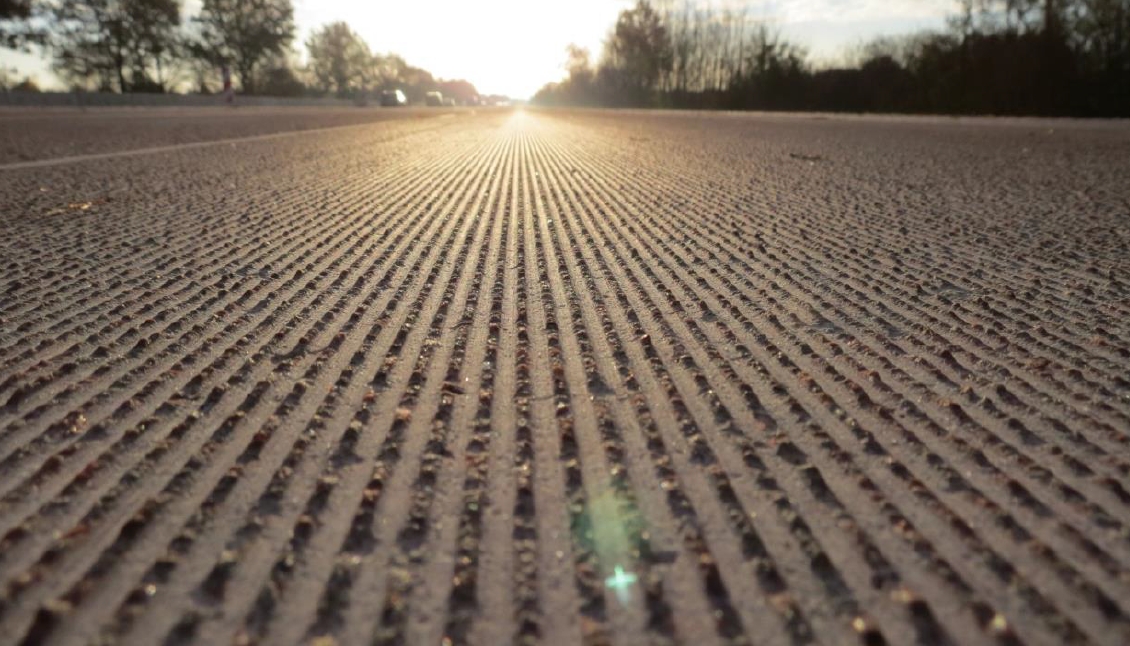Innovative Grinding and Grooving Surfaces
Sections with heavy traffic loads on the German and Austrian motorway network are preferably built as exposed aggregate concrete. Older existing sections are also made of broom or jute cloth. Concrete pavements are characterised by low maintenance requirements and a long service life when properly manufactured. Nevertheless, maintenance measures become necessary with increasing age, in particular to restore sufficient skid resistance.
In the INGGO project – based on several preliminary projects in Germany – the findings regarding concrete mix design, packing density and sand influence were deepened. In the laboratory, concrete mix design was optimised with regard to packing density and grain composition, produced with different texture geometries. Durability tests were carried out with regard to weather influence and traffic loads and compared with conventional exposed aggregate concrete. An investigation of the earliest possible grinding time was also part of the laboratory work.
Grinding measures were implemented on three existing sections in Austria, one of them in a tunnel. For these sections, the focus was on the durability of the improved skid resistance and rolling noise. A possible influence of the winter road service was ascertained, but no noticeable problems were found during operation. On a new exposed aggregate concrete section in Austria, two different grinding geometries were produced and monitored over a period of one year with regard to skid resistance, rolling noise, texture, evenness and rolling resistance. On all grinding sections, a clear improvement in rolling noise and longitudinal evenness was observed. The development of skid resistance showed mixed results depending on the measuring method. A model for predicting rolling noise levels was developed from 3D texture measurement data.
In the project, further insights were gained for introducing texture grinding as a standard construction method on new concrete pavements. AIT was responsible for project coordination, monitoring of surface properties on the test sections including skid resistance, evenness, noise emissions and texture and the modelling of noise properties from high-resolution 3D texture measurements.
Funded by the Federal Ministry for Climate Protection, Environment, Energy, Mobility, Innovation and Technology (BMK) and the Austrian Research Promotion Agency (FFG) as part of the Mobility of the Future / DE-AT Cooperation Transport Infrastructure Research program.




